Welcome to the enchanting world of plant arrangements, where your home becomes a living canvas of color, texture, and tranquility. Whether you’re just beginning your gardening journey or you’ve been nurturing greenery for years, creating beautiful plant displays can transform any space into a vibrant sanctuary. Each plant you choose tells a story, and arranging them thoughtfully not only enhances your home’s aesthetics but also your personal well-being. From breathing life into forgotten corners to curating a lush centerpiece for your living room, the possibilities are as boundless as your imagination.
For those just dipping their toes into the gardening pool, fear not—the art of plant arrangement is not reserved for the seasoned horticulturist. We’ll guide you through the basics, from selecting the right plants for your environment to understanding the nuances of size, shape, and color that make an arrangement sing. Seasoned gardeners will discover fresh inspiration and new techniques to elevate their existing displays. By examining the interplay of light, shadow, and foliage, we’ll explore how to craft arrangements that captivate and soothe.
In this article, you’ll learn how to harmonize different plant species to create dynamic and eye-catching displays that reflect your personal style. We’ll also delve into practical tips for maintaining these arrangements, ensuring they remain lush and healthy. Your home deserves to be a reflection of your unique spirit, and what better way to express it than through the timeless beauty of nature? Let’s embark on this journey together, transforming your living spaces with creativity and care.
Choosing Plants for Home Decor
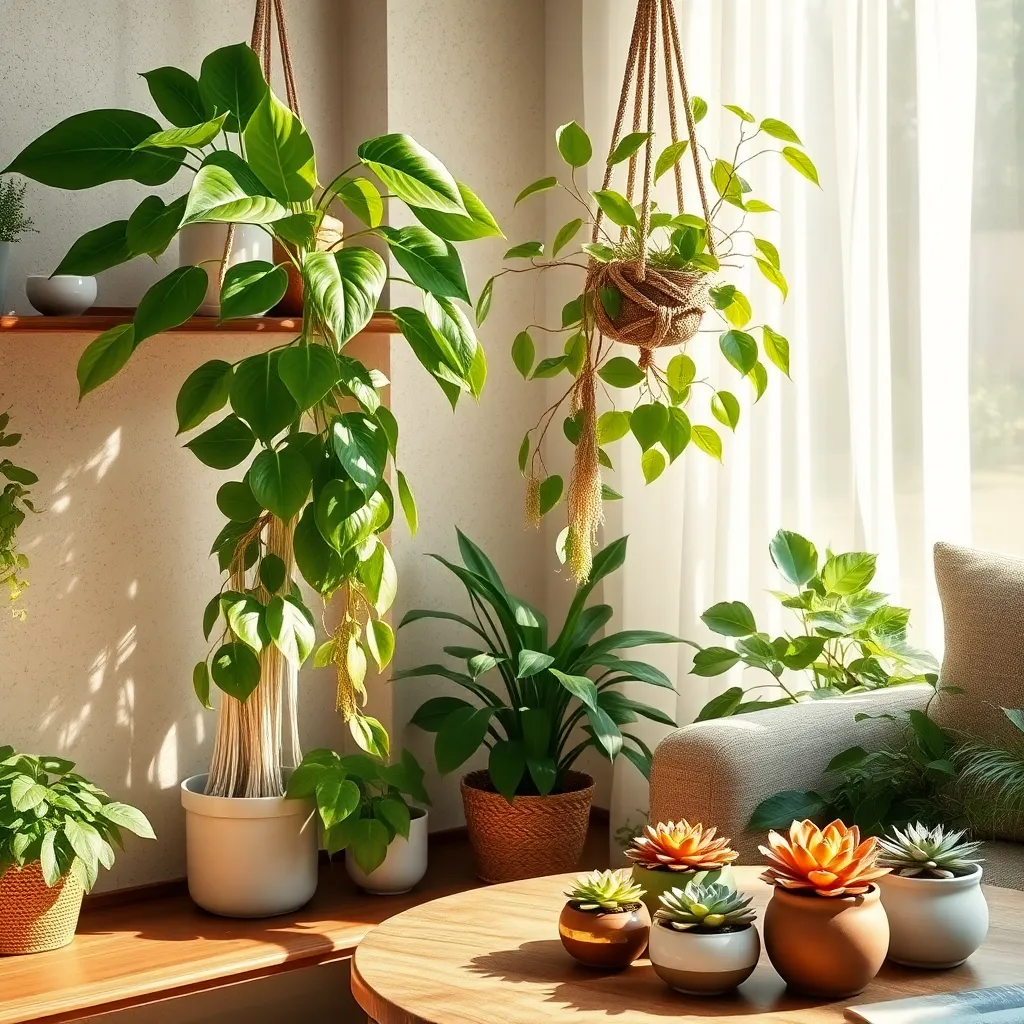
When selecting plants for home decor, consider the natural light in your space. Bright, indirect light is ideal for most houseplants, making them thrive and maintain their vibrant colors.
For low-light conditions, choose plants like the ZZ plant or snake plant, which are known for their resilience. These plants require minimal watering, making them perfect for busy homeowners.
Ferns and peace lilies are excellent choices for adding texture and depth to your decor. They prefer humid environments and regular misting, so placing them in a bathroom can be a delightful option.
Advanced gardeners can experiment with more challenging species like orchids, which require specific humidity and temperature conditions. Creating a micro-climate using a humidity tray beneath the orchid pot can significantly enhance its growth and blooming cycle.
Creative Indoor Plant Combinations
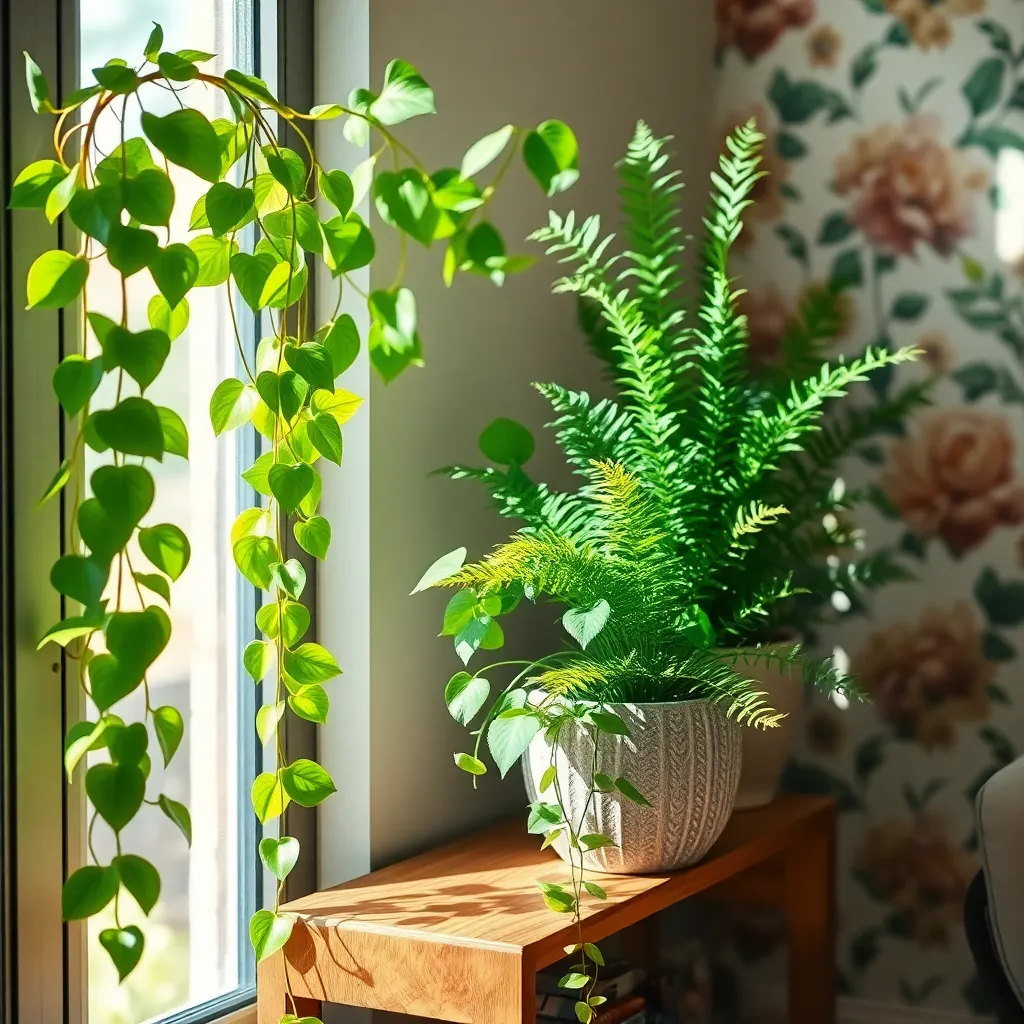
Combining indoor plants can breathe new life into your home while reflecting your personal style. Consider pairing plants with similar light and water needs to ensure they thrive together. For beginners, a simple but stunning combination is the pairing of a snake plant (Sansevieria) and a pothos (Epipremnum aureum). Both are low-maintenance and can tolerate a range of light conditions, making them perfect for those still honing their green thumb.
When creating plant combinations, think about contrasts in color and texture to add visual interest. For example, the lush, soft leaves of a peace lily (Spathiphyllum) can beautifully offset the spiky, architectural form of a ZZ plant (Zamioculcas zamiifolia). Both plants prefer indirect light and moderate watering, meaning they can share the same space without one overshadowing the other. Make sure to use a well-draining potting mix and allow the top inch of soil to dry out between waterings to keep both plants healthy.
Advanced gardeners might enjoy experimenting with humidity-loving plants by creating a tropical indoor oasis. Combine the vibrant hues of a calathea with the delicate leaves of a maidenhair fern for a lush display. Both thrive in high humidity and indirect light, so placing them in a bathroom or using a pebble tray can help maintain the necessary moisture levels. Regular misting can also enhance humidity, keeping the leaves looking their best.
Finally, don’t shy away from using different pot styles to enhance your plant arrangements. Using a mix of ceramic, terracotta, and hanging pots can add dimension and interest to your indoor garden. Ensure your pots have drainage holes to prevent root rot, and choose a pot size appropriate for the plant’s growth to avoid overcrowding. This approach not only supports plant health but also gives you the freedom to express your personal style through your plant displays.
Arranging Plants for Visual Appeal
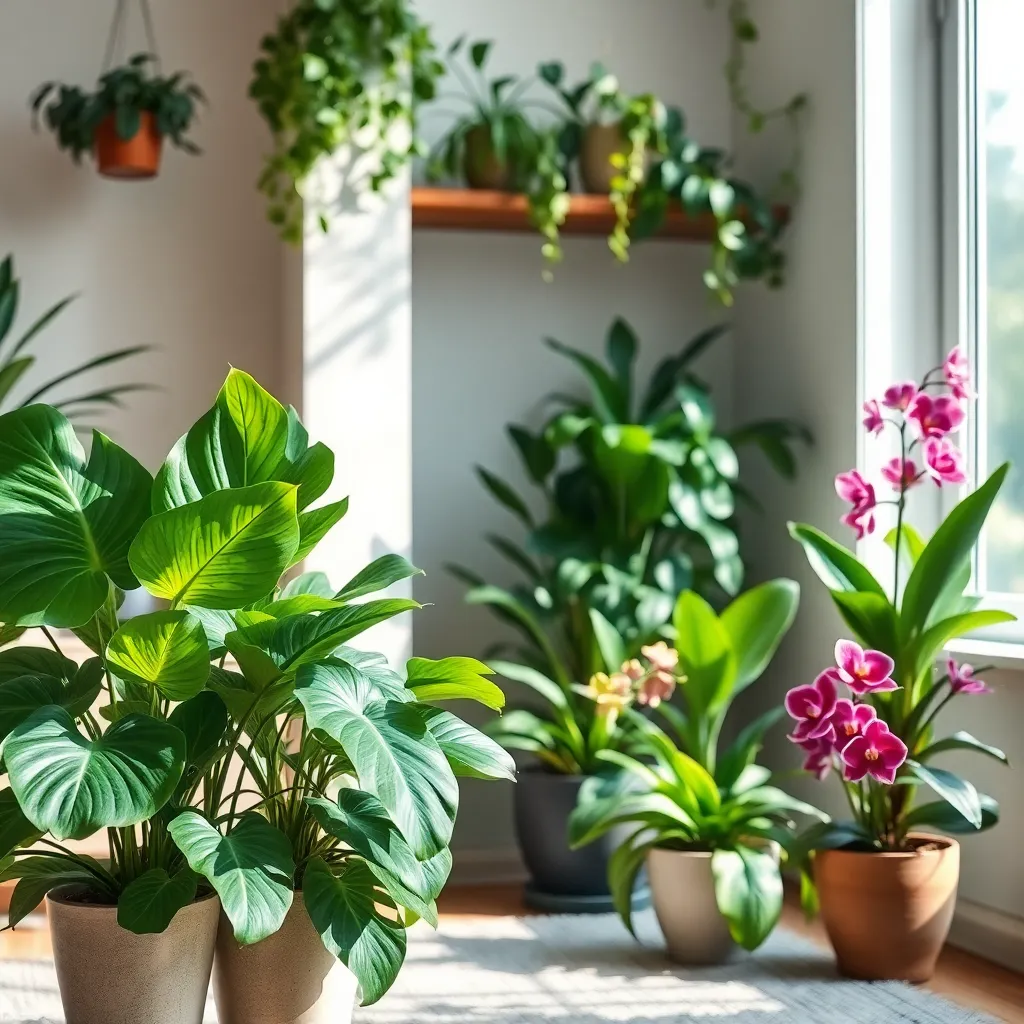
When creating a visually appealing plant arrangement, consider the height and texture of each plant to create a balanced look. Group plants with varying heights together to add depth and dimension, ensuring taller plants don’t overshadow smaller ones.
Use color contrast to make your arrangement pop. Pair plants with different leaf colors, such as dark green with lighter variegated leaves, to create a striking visual effect.
Incorporate plants with differing leaf shapes for added interest. For instance, the broad leaves of a Monstera can beautifully complement the delicate fronds of a fern.
Consider the growing conditions each plant requires to ensure they thrive together. Group plants with similar sunlight and watering needs, such as succulents and cacti, to maintain a healthy arrangement.
For advanced gardeners, experiment with layering your plants by using plant stands or shelves. This technique allows you to display more plants in less space while maintaining a cohesive look.
- Use well-draining soil for most indoor plants to prevent root rot.
- Water frequency should be adjusted based on the plant type and season.
- Rotate plants regularly to ensure even growth and exposure to sunlight.
Caring for Your Plant Arrangements
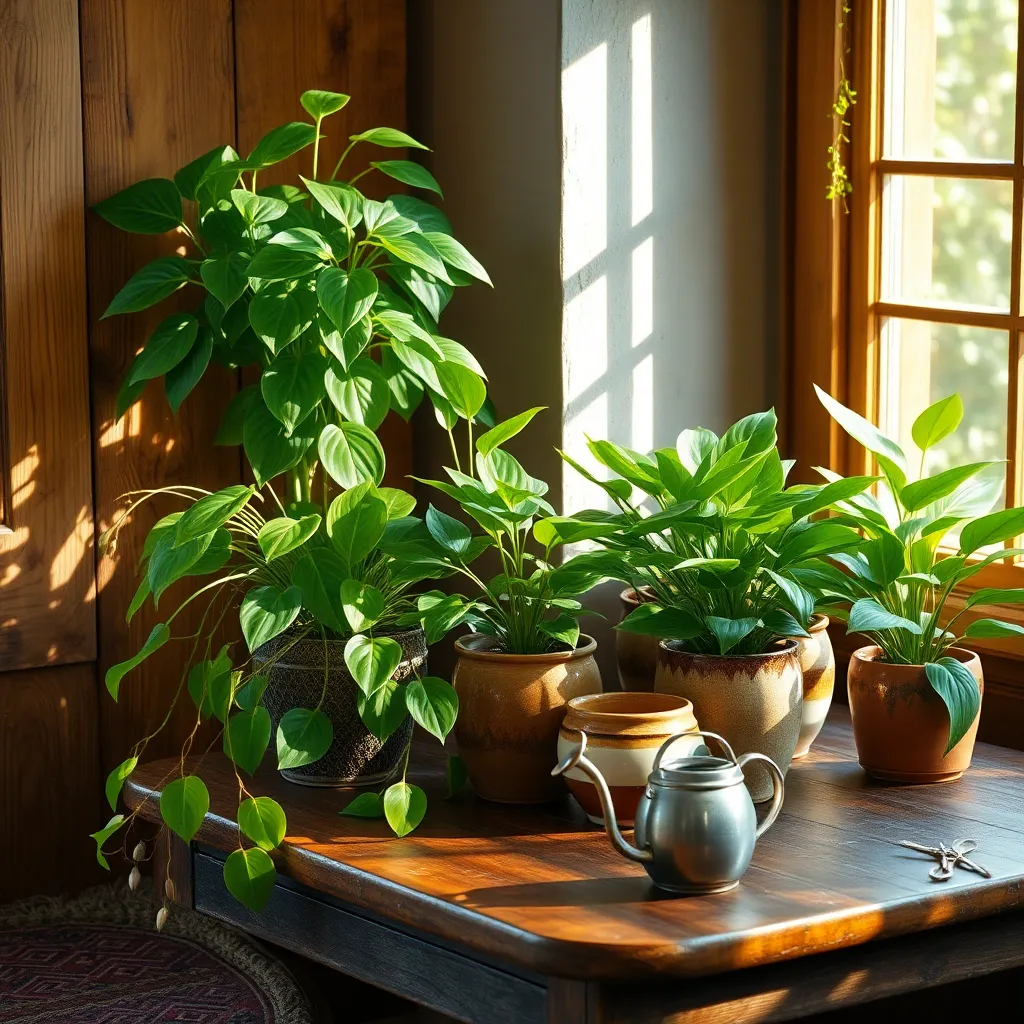
When caring for your plant arrangements, it’s crucial to consider the light conditions in which they thrive. Most houseplants prefer bright, indirect light, but always research the specific needs of each plant in your arrangement to ensure they are well-matched.
Watering is another key aspect of plant care, and each species will have its own requirements. Generally, it’s wise to allow the top inch of soil to dry out before watering most indoor plants to prevent root rot.
For beginners, using a well-draining potting mix is essential to keep roots healthy. Consider adding perlite or sand to your soil mix to enhance drainage and aeration.
Advanced gardeners might experiment with humidity levels to mimic the natural environment of their plants. Using a humidity tray or misting plants can benefit species that originate from tropical climates.
Fertilization is vital to promote growth and vibrant foliage. During the growing season, which typically spans spring and summer, apply a balanced liquid fertilizer every four to six weeks.
Pruning can help maintain the shape and health of your plant arrangement. Regularly remove dead or yellowing leaves to encourage new growth and prevent disease.
To deter pests, inspect your plants weekly for signs of infestation, such as webs or discolored spots. Treat affected plants with insecticidal soap or neem oil, and isolate them to prevent spreading.
Finally, rotate your plants every few weeks to ensure even growth and exposure to light. This simple step can help maintain balance and symmetry in your arrangement, keeping it visually appealing.
Seasonal Updates for Plant Displays
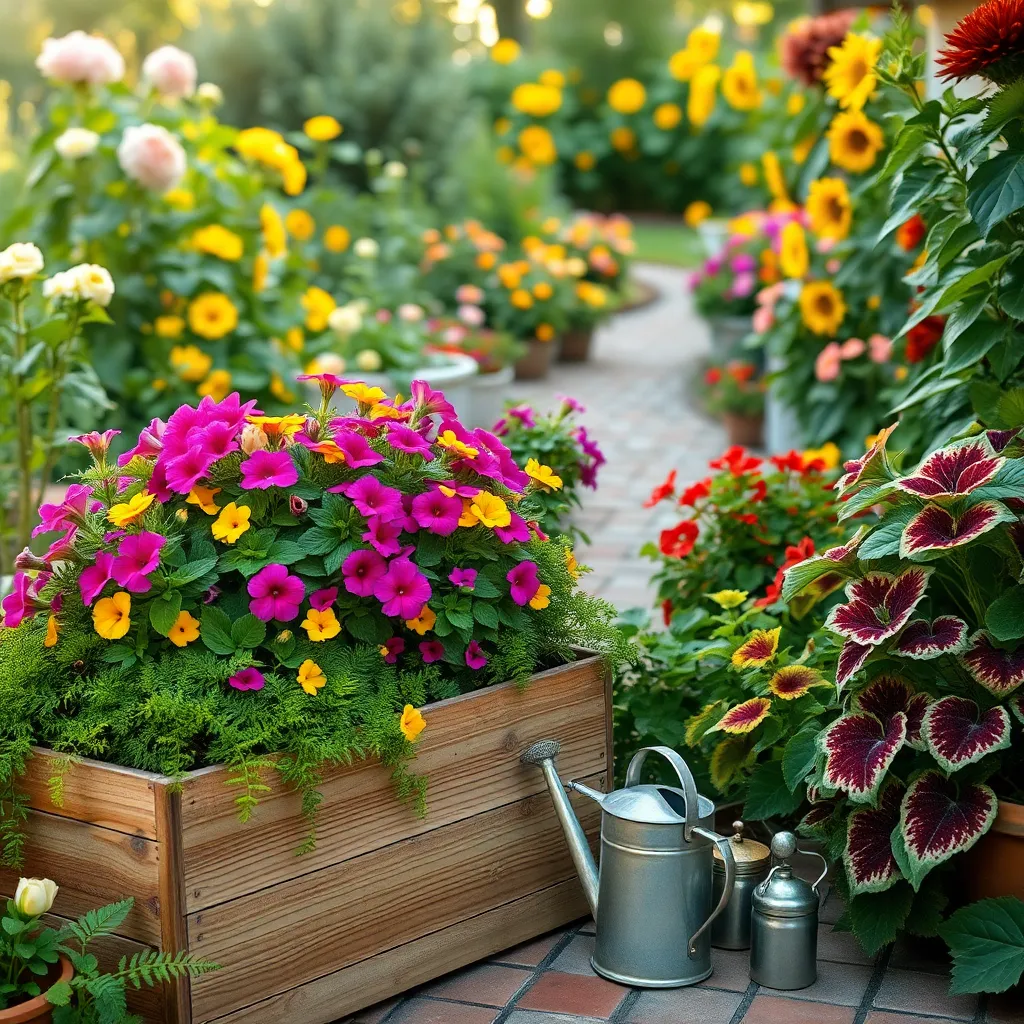
As the seasons change, so do the needs of your plant displays. In the fall, consider rotating in plants like chrysanthemums and ornamental cabbages that thrive in cooler temperatures. Ensure your displays remain vibrant by adjusting your watering schedule to account for lower evaporation rates. Winter can be challenging, but incorporating evergreens and plants like poinsettias can keep your arrangements lively.
Seasonal transitions offer a chance to refresh your plant displays. In spring, introduce flowering bulbs such as tulips and daffodils for a burst of color. To encourage healthy growth, use a well-draining potting mix and ensure your plants receive adequate sunlight as days get longer. Summer calls for heat-tolerant plants; succulents and vincas are excellent choices for bright, sunny spots.
Adjusting your plant care routine with the seasons is essential for maintaining healthy displays. During autumn, reduce fertilization to help plants prepare for dormancy. Consider grouping plants with similar light and water needs together, making maintenance easier and more efficient. In summer, increase watering frequency for thirsty plants, especially during heatwaves, to prevent stress and wilting.
Advanced gardeners can take advantage of seasonal opportunities to experiment with plant arrangements. Use the winter months to propagate cuttings indoors, preparing for a lush spring display. For a creative twist, try layering plants with different foliage textures and colors, such as mixing ferns with blooming perennials. By understanding seasonal plant behaviors, you can ensure your displays are not only beautiful but also thriving year-round.
Conclusion: Growing Success with These Plants
As we’ve explored, the art of arranging beautiful plants in your home offers more than just aesthetic value; it fosters essential relationship dynamics. Firstly, caring for plants together enhances communication and teamwork. Secondly, observing growth reminds couples of the importance of nurturing relationships. Thirdly, the tranquility of greenery reduces stress, creating a peaceful environment conducive to love. Fourthly, gifting plants symbolizes thoughtfulness and ongoing commitment. Finally, the diversity of plant types encourages appreciation of each other’s uniqueness.
To immediately enrich your relationship, choose a plant together this weekend, allowing it to become a shared project that symbolizes your growth as a couple. As you embark on this green journey, ensure you save or bookmark this article as a handy guide to revisit these insights whenever you need a gentle reminder of how nature-inspired practices can strengthen your bond.
Looking ahead, integrating these elements into your relationship can pave the way for a flourishing partnership filled with joy and resilience. Embrace this opportunity to grow together, and remember that nurturing both your plants and relationship can lead to lasting happiness and harmony.
